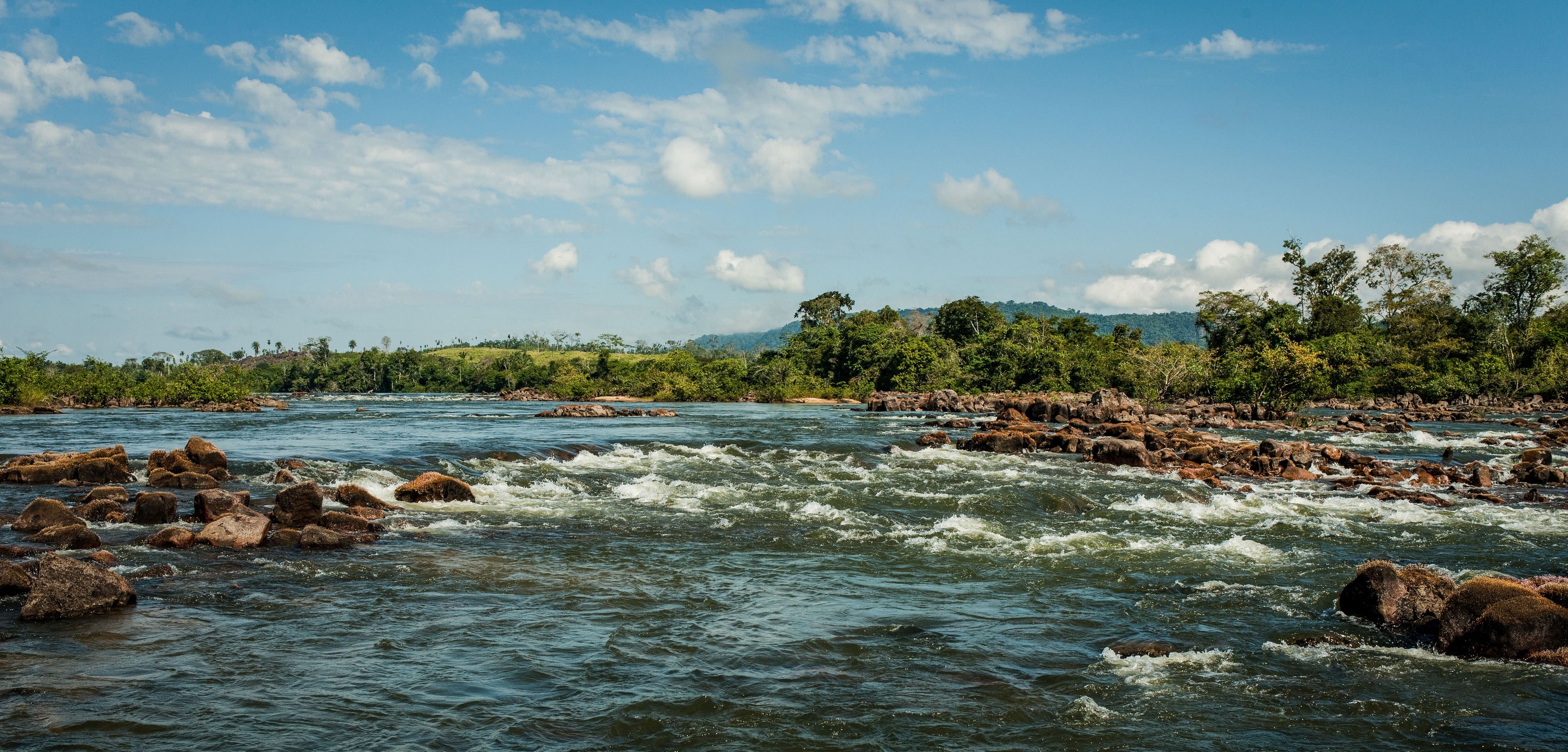Latin America, a dry region with water
Of all the water surrounding the Earth, only 2.5% is fresh water suitable for industrial, agricultural, and domestic use. And less than 0.32% of that is found in lakes, rivers, wetlands, and accessible aquifers.
Latin America has 1/3 of the world's fresh water, but it is unevenly distributed. Twenty-five percent of its territory is desert, and in some countries such as Argentina, Chile, and Mexico, this percentage increases to more than 50%.
Most of the areas that provide drinking water to cities are also important areas for biodiversity. However, they are threatened by deforestation; habitat degradation due to changes in land use because of agricultural expansion and grazing activities, and because of the growth of cities and the development of infrastructure. Between 2000 and 2005, 64% of global deforestation occurred in Latin America.
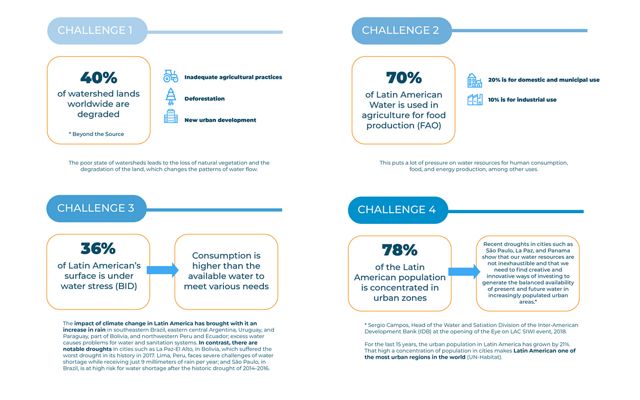
For the last 15 years, the urban population in Latin America has grown by 21%. That high a concentration of population in cities makes Latin American one of the most urban regions in the world (UN-Habitat).
Agriculture
On average, 120 liters are required to produce a glass of wine (FAO). Water is essential to produce the food we eat. Agriculture alone is the largest consumer of water supplies worldwide. The amount of water needed will depend on the place where food is produced since climate and agricultural practices play a fundamental role.

Energy
Water and energy are strongly linked. All energy sources require water as part of their production process (UN). Water is needed to extract raw materials, cold thermal processes, electric turbines, biofuel crops, and more. Similarly, in many cases, energy is required to transport, purify, and distribute water.
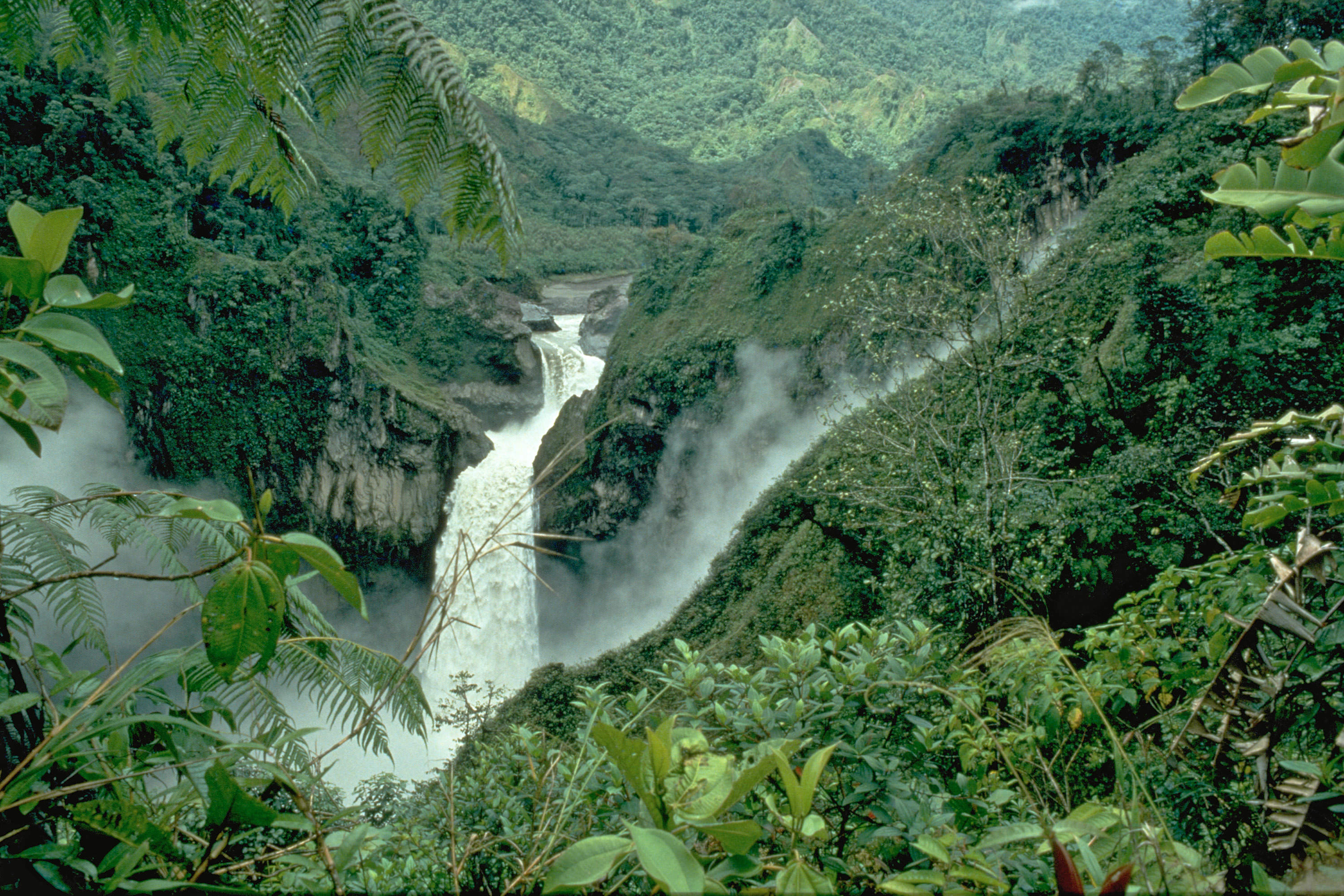
Industry
Water is important for almost all industrial sectors (UNESCO). It is critical for health, the real estate markets, productive industry, and recreation. It is used for cleaning, rinsing, and cooling industrial processes; to generate energy; as a conduit for waste and transportation; and it is needed to sustain economic growth in food production, industry, and energy.
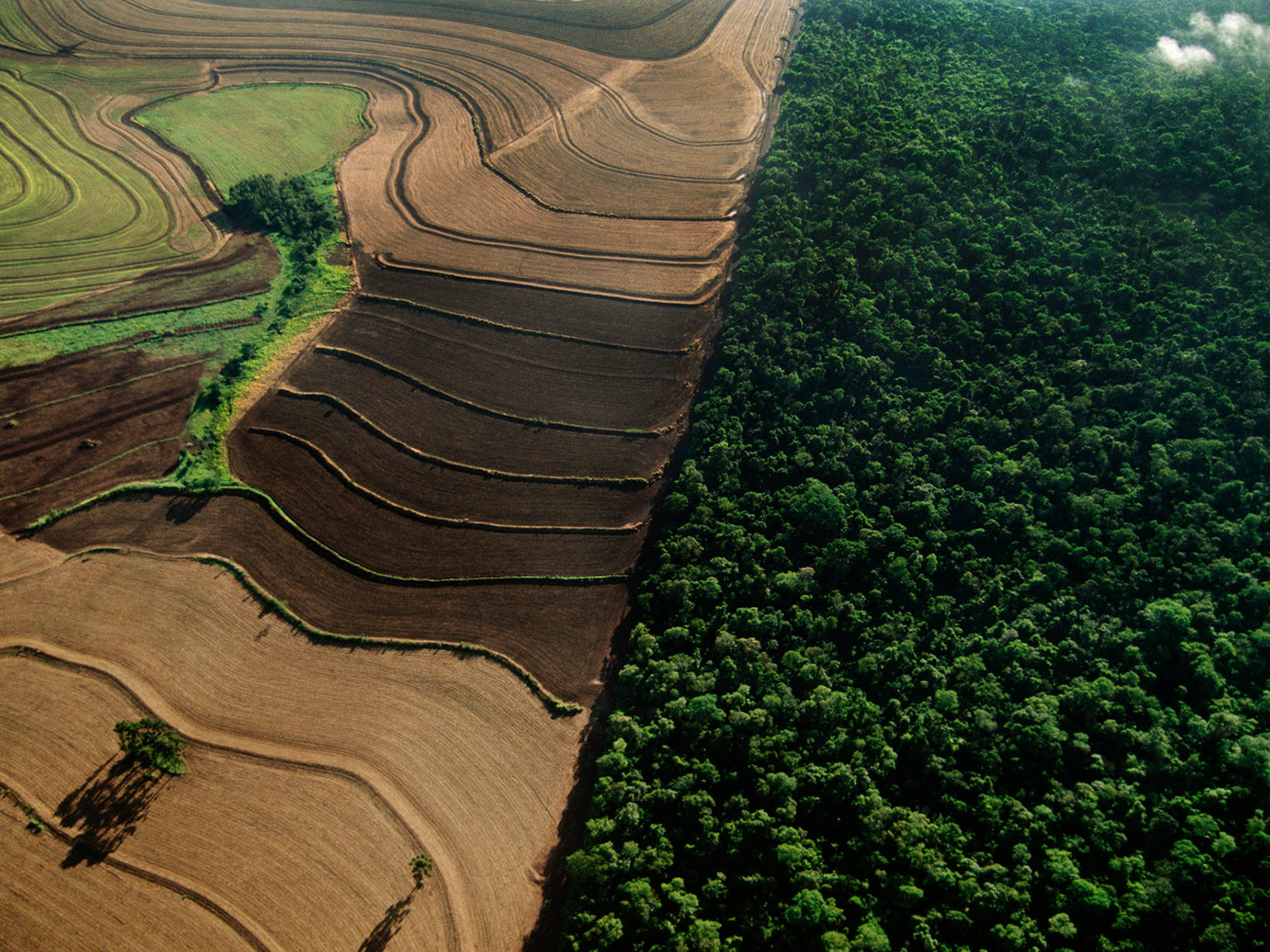
Domestic
Water is essential for homes around the world. Societies require a supply of drinking water and sanitation services to thrive. According to the IDB, around 18 million inhabitants in rural areas of Latin America and the Caribbean did not have better-quality water services, and 41 million did not have improved sanitation in 2015.
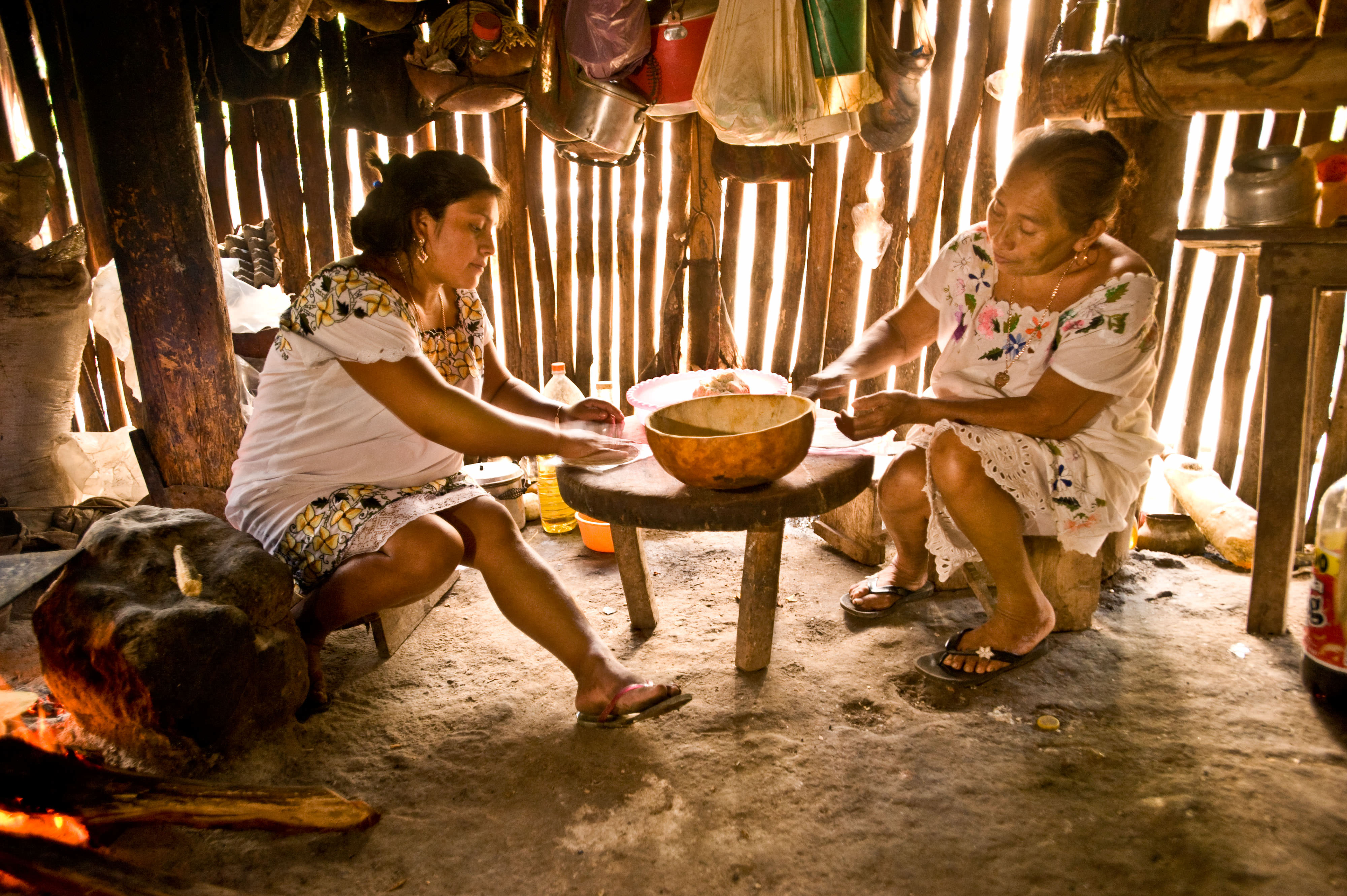
Ecosystems
Water is essential to maintaining the integrity of the ecosystems from which our water supplies derive and, therefore, on which we all depend for subsistence. Currently, an estimated 1.7 billion people living in the largest cities in the world depend on water supplies from distant watersheds. By 2050, these urban watersheds will supply up to two-thirds of the world's population, even though they cover only a third of the earth's surface. (TNC)

